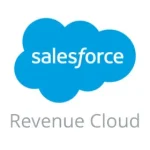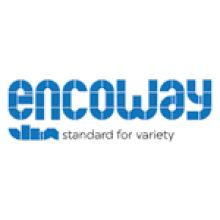Salesforce Revenue Lifecycle Management (RLM), now called Revenue Cloud or Revenue Cloud Advanced, is a native Salesforce solution for managing the entire revenue process. It automates pricing, quoting, contracts, billing, orders, and revenue recognition, giving businesses a complete revenue management platform. RLM is designed for companies with complex revenue streams, helping them streamline operations and connect data across the customer lifecycle.
Salesforce RLM enables organizations to automate complex workflows, reduce revenue leakage, and enhance forecasting accuracy. With real-time visibility into financial performance and a seamless connection between sales, finance, and customer success teams, companies can drive greater efficiency, improve customer experiences, and maximize revenue growth.
While there are many advantages to unifying the revenue lifecycle using Revenue Cloud, the solution is new. It does not yet have a proven record of implementation and ease of use. Current users and partners report long implementation times, an unclear path to migrate from Salesforce CPQ to Revenue Cloud, and the need for retraining.
Why this product is good
Positives of Salesforce RLM
Product Details
What is Salesforce RLM?
Salesforce Revenue Lifecycle Management (Revenue Cloud) is an integrated platform that automates revenue operations, delivering seamless buying and selling experiences across various channels. It streamlines the quote-to-cash process by managing catalogs, pricing, Configure, Price, Quote (CPQ), contract lifecycle management, orders, and billing within Salesforce CRM.
Features include:
- Configure, Price, Quote (CPQ)
- Billing and invoicing automation
- Contract Lifecycle Management (CLM)
- Revenue recognition and compliance
- Omnichannel sales and self-service buying
- AI-driven insights and revenue forecasting
- Seamless integration with Salesforce CRM and ERP systems
Configure, Price, Quote (CPQ): Salesforce RLM’s CPQ functionality streamlines the quoting process by automating complex pricing and discounting rules. Sales teams can quickly generate accurate, customized quotes based on predefined configurations, reducing errors and delays. This feature helps businesses improve deal velocity and ensure consistency across sales proposals.
Billing and invoicing automation: The billing automation feature ensures accurate and timely invoicing by integrating subscription, usage-based, and one-time billing models. It reduces manual effort by automatically generating invoices based on contract terms and usage data, improving cash flow management and minimizing revenue leakage.
Contract Lifecycle Management (CLM): Revenue Cloud helps businesses manage contracts from creation to renewal with automated workflows and approval processes. It enables seamless collaboration between sales, legal, and finance teams to ensure compliance and reduce contract negotiation time. It also provides real-time visibility into contract status, helping companies drive renewals and upsell opportunities.
Revenue recognition and compliance: The platform automates revenue recognition in accordance with accounting standards like ASC 606 and IFRS 15. Tracking revenue streams across different contract types ensures compliance and accurate financial reporting. This feature is essential for subscription-based businesses that need to recognize revenue over time.
Omnichannel sales and self-service buying: Revenue Cloud enables businesses to sell through multiple channels, including direct sales, partner networks, and self-service eCommerce portals. Customers can independently configure and purchase products or services, improving the buying experience. This flexibility helps businesses scale and cater to diverse customer preferences.
AI-driven insights and revenue forecasting: With AI-powered analytics, Revenue Cloud provides real-time insights into revenue performance, deal trends, and customer buying behavior. Businesses can use predictive forecasting to optimize pricing strategies and identify revenue opportunities. These insights help improve decision-making and drive more predictable growth.
Seamless integration with Salesforce CRM and ERP systems: Revenue Cloud integrates natively with Salesforce Sales Cloud, Service Cloud, and other CRM solutions, ensuring a unified view of customer data. It also connects with ERP systems to streamline order management, invoicing, and financial reporting. This seamless integration enhances operational efficiency and improves collaboration across departments.
What are the advantages of using Salesforce RLM?
Salesforce Revenue Lifecycle Management Benefits
Organizations with complex products and revenue management needs experience a range of benefits from Salesforce RLM, including:
- Integrates smoothly with other Salesforce products, ensuring a unified experience across sales, finance, and customer success teams.
- Provides real-time insights into revenue performance, helping businesses make data-driven decisions and enhance financial forecasting.
- The wide range of features that integrate seamlessly across various departments provide a holistic solution for revenue lifecycle management.
- Significantly reduces manual work and increases productivity through automation and streamlined processes.
- Streamlines contract management by centralizing every contracting touchpoint within the CRM, reducing system costs, improving data accuracy, and automating approvals and changes.
- User-friendly and easy to learn, even for new users, while simplifying complex pricing structures, SKUs, and discounts across multiple product families.
- Improves efficiency and accuracy with its CPQ capabilities that make multiyear quoting, contracted pricing, and discount management seamless.
What industries are best suited for this solution?
Salesforce RLM for Industries
Salesforce Revenue Cloud helps businesses optimize their revenue lifecycle across various industries by streamlining sales, pricing, and revenue management processes. Here’s how it caters to key sectors:
Technology & SaaS
Subscription and Usage-Based Pricing: IT and SaaS companies can easily manage recurring revenue models, dynamic pricing, and usage-based billing, ensuring accurate invoicing and seamless renewals.
Automated Contract Management: Integrated CLM simplifies contract modifications, renewals, and approvals within the CRM, reducing errors and improving deal velocity.
Seamless Integration with CRM and ERP: Connecting CRM with ERP ensures data consistency across sales, finance, and customer success teams, improving operational efficiency and revenue forecasting.
Manufacturing
Complex Product Configuration: It supports configurable product catalogs, allowing sales reps to generate accurate quotes for custom manufacturing orders.
ERP and Supply Chain Integration: Connecting sales with inventory and production systems prevents order fulfillment delays and ensures accurate lead times.
Multichannel Sales Enablement: The platform supports direct sales, partner channels, and self-service portals so manufacturers can reach customers more efficiently.
Telecommunications
Usage-Based and Tiered Billing: It helps telecom companies manage diverse pricing structures, including metered and subscription-based billing.
Automated Order and Contract Renewals: Salesforce RLM streamlines recurring billing, renewals, and service upgrades, improving customer retention.
Self-Service and Partner Portals: Customers and channel partners are empowered to configure and purchase services independently, enhancing scalability.
Prices
Salesforce RLM Pricing
Salesforce Revenue Cloud is an add-on to Salesforce CRM, and pricing for this specific suite of tools is not listed on the Salesforce website.
Pricing can vary depending on the specific needs of your business, the number of users, and the Salesforce products you already use. It’s best to contact Salesforce directly for a quote tailored to your business needs.
Is there anyone else out there?
Competitors and Alternatives to Salesforce RLM
Salesforce Revenue Lifecycle Management has several competitors in the market, each built to optimize the revenue lifecycle and streamline quote-to-revenue processes. When evaluating Salesforce RLM alternatives, consider how they unify revenue processes and synchronize data for improved cross-functional collaboration.
Top Salesforce RLM Alternatives
DealHub
DealHub’s revenue platform is a powerful alternative to Salesforce Revenue Cloud, offering a comprehensive suite of tools designed to manage the entire revenue lifecycle, from quoting to billing and revenue recognition. DealHub provides a seamless experience for managing complex sales processes, including CPQ (Configure, Price, Quote) and contract lifecycle management. It integrates directly with Salesforce and other CRM platforms, ensuring that sales teams can generate accurate quotes and proposals and sync data back to the opportunity. One of DealHub’s key advantages is its ability to provide a unified platform for deal desk teams, enabling them to collaborate effectively and streamline workflows, reducing time-to-revenue and improving accuracy in the sales process. Its flexible pricing capabilities, advanced revenue recognition features, and smooth integration with other business systems make it an ideal choice for companies selling complex solutions looking to optimize their revenue operations.
Zuora
Zuora offers a comprehensive platform for subscription billing, finance, and revenue recognition, enabling businesses to manage complex subscription models and pricing strategies. Zuora’s advanced features include automated billing, flexible pricing models, and subscription management, allowing companies to scale their operations efficiently. It also integrates seamlessly with CRM systems and ERP platforms to ensure real-time revenue tracking and financial compliance, making it an excellent choice for businesses with subscription-based models. RevPro is Zuora’s cloud-based revenue recognition solution designed to automate and manage the revenue lifecycle for businesses that need to comply with complex revenue recognition standards. RevPro automates the entire process, from billing to financial reporting, and integrates with various enterprise systems to provide real-time insights into revenue performance. It is especially beneficial for organizations in industries like software, healthcare, and media, where accurate and timely revenue recognition is critical for compliance and business growth.
Oracle NetSuite
Oracle NetSuite is a cloud-based ERP platform that includes modules for managing the entire revenue lifecycle, from order management to billing and revenue recognition. It provides businesses with automation tools for invoicing, accounting, and revenue tracking, reducing the risk of errors and improving financial visibility. NetSuite’s financial management capabilities are particularly beneficial for organizations seeking to streamline back-office operations and ensure compliance with industry standards such as ASC 606 and IFRS 15. Integrating Oracle CPQ with NetSuite enables users to quote and manage revenue within one platform.
Nue
Nue provides revenue lifecycle management for subscription-based businesses. Their platform is designed to automate and optimize various aspects of the subscription revenue process, including billing, invoicing, revenue recognition, and subscription management. Nue supports flexible pricing models, such as recurring, usage-based, and tiered pricing, making it ideal for businesses with subscription-based revenue models. The platform integrates with various CRM and ERP systems to ensure seamless workflows, real-time financial reporting, and compliance with accounting standards such as ASC 606.
Conga
Conga offers robust revenue lifecycle management capabilities to optimize the entire revenue process, from quoting and contract management to billing and revenue recognition. The platform provides advanced tools for automating the creation of accurate, compliant contracts, pricing configurations, and complex quote-to-cash workflows. With Conga, businesses can seamlessly manage subscription billing, handle multi-year contracts, and ensure consistent pricing across multiple channels. Its integration with Salesforce and other enterprise systems allows for real-time data synchronization, improving efficiency and reducing errors. Additionally, Conga’s revenue recognition functionality ensures that businesses stay compliant with accounting standards such as ASC 606 and IFRS 15, making it an ideal solution for companies looking to streamline their revenue operations and improve financial visibility.
FAQs
Common Questions and Answers
Unifying revenue lifecycle management into one platform offers several key advantages for businesses. It streamlines processes by consolidating critical functions—such as quoting, contract management, billing, and revenue recognition—into a single system, reducing the need for disparate tools and minimizing the complexity of managing multiple systems. This integration ensures consistent data across the entire revenue process, improving accuracy and eliminating errors that may arise from manual data entry or siloed systems. Additionally, a unified platform provides greater visibility into the entire revenue cycle, enabling real-time reporting, forecasting, and analysis that can drive smarter decision-making. It also helps businesses stay compliant with ever-changing financial regulations by automating revenue recognition and financial reporting. Using a single platform also enhances collaboration across departments—such as sales, finance, and legal—by providing a shared, transparent view of the revenue process, leading to faster approvals, improved customer experiences, and overall operational efficiency.
Salesforce Revenue Lifecycle Management (RLM) includes several key business applications that help manage the entire revenue process, from lead generation to revenue recognition and enhance collaboration across departments. Key applications include:
1. Sales Cloud: Manages sales processes, including lead and opportunity tracking, sales forecasting, and pipeline management. It integrates seamlessly with other Salesforce applications to provide a unified view of the sales cycle.
2. Salesforce CPQ (Configure, Price, Quote): Helps sales teams create accurate quotes quickly by automating product configurations, pricing, and discounting. This tool ensures that quotes align with customer needs and pricing strategies.
3. Billing: This feature automates invoicing and billing processes, making managing complex pricing models and subscription billing easier. It also ensures accurate billing based on the contract terms and integrates with other financial systems.
4. Revenue Recognition: Ensures that revenue is recognized in compliance with accounting standards such as ASC 606 and IFRS 15. This application automates revenue recognition based on contract terms and performance obligations.
5. Contract Management: Streamlines the creation, negotiation, and management of contracts. This tool helps ensure that contracts are aligned with sales agreements and revenue recognition policies, improving accuracy and compliance.
6. Analytics and Reporting: This feature provides real-time visibility into key financial and sales metrics, enabling businesses to track revenue performance, forecast future earnings, and make data-driven decisions.
These applications work together to automate and optimize every stage of the revenue lifecycle, ensuring seamless processes, compliance, and improved operational efficiency.
Teams across the organization involved in the quote-to-cash process use RLM:
– Sales Teams: To configure pricing, generate quotes, and structure complex deals.
– Finance Teams: To automate billing, revenue recognition, and ensure compliance with ASC 606 and IFRS 15.
– Revenue Operations (RevOps): To bridge sales and finance, ensuring accurate revenue forecasting and automation.
– Customer Success Teams: To oversee renewals, contract adjustments, and long-term customer revenue.
Salesforce Revenue Lifecycle Management extends beyond quoting by integrating billing, contract management, and revenue recognition into a single platform. It offers more flexibility for businesses managing complex products.
Not exactly. Salesforce Revenue Lifecycle Management (RLM) includes CPQ functionality, but it’s a broader solution designed to manage the entire revenue process—not just quoting. If your business only needs CPQ tools, the original Salesforce CPQ may still meet your needs for now. However, Salesforce is clearly prioritizing RLM for future investment and development, which means CPQ users may see fewer updates and reduced support over time.
Implementing Salesforce Revenue Cloud can vary in complexity and duration based on your organization’s size, existing systems, and specific requirements. Since it integrates multiple components like CPQ (Configure, Price, Quote), Billing, and Revenue Recognition, implementation can be intricate, especially for businesses with complex pricing models or legacy systems.
Many customers are reporting longer implementations, retraining requirements, and unknown costs. And, since there’s no clear migration path from Salesforce CPQ to Revenue Cloud, current customers face a complete reimplementation not merely an upgrade.
Key challenges include:
– Complex Sales Processes: Organizations with multifaceted sales procedures may face difficulties in streamlining workflows.
– Recurring Revenue Models: Managing subscriptions or usage-based billing requires careful configuration.
– Integration with Existing Systems: Ensuring seamless data flow between Revenue Cloud and current CRM or ERP systems can be challenging.
The duration of a Salesforce Revenue Cloud implementation depends on the project’s scope:
– MVP (Minimum Viable Product): Approximately 6–10 weeks.
– SMB (Small and Medium Businesses): Around 12 weeks.
– Enterprise Projects: Each phase may take 12 weeks or more, with the entire project potentially extending over several months.
These timelines encompass phases like requirements analysis, configuration, integration, testing, and user training.
Salesforce is no longer updating its CPQ solution and is gradually phasing it out. As the company shifts its focus to Revenue Cloud, many CPQ customers are considering a migration, but it’s important to understand the difficulties that come with it.
Salesforce CPQ users can migrate to Revenue Cloud, but the process is far from simple and it comes with significant challenges. Salesforce has not provided a clear or standardized migration path from CPQ to Revenue Cloud, which means many businesses face the risk of costly and complex custom rebuilds. This lack of direction increases the chances of project delays, misconfigurations, and operational disruptions.
Even more concerning, Revenue Cloud implementations are often reported to take longer than traditional CPQ projects due to their higher complexity. Without proper planning, companies may find themselves stuck in a lengthy and resource-intensive transition, or worse—locked into a malfunctioning system that no longer receives adequate support.
As Salesforce phases out CPQ and shifts its focus away from the product, users are seeing slower bug fixes, reduced partner support, and a lack of innovation—further complicating the migration process. For these reasons, many businesses are proactively exploring alternative CPQ or revenue lifecycle management solutions that offer easier implementation, ongoing product development, and reliable support.
You don’t have to migrate to Revenue Cloud, but staying on Salesforce CPQ comes with increasing risks. Salesforce has stopped selling CPQ to new customers and hasn’t released a major update in years, signaling a reduced commitment to the platform. As a result, support is expected to decline, bug fixes may become slower, and finding knowledgeable implementation partners will get harder as more shift away from CPQ.
Without a clear migration path from Salesforce, you could eventually face a situation where your mission-critical quoting system becomes unstable or unsupported. While you can continue using Salesforce CPQ for now, it’s wise to start evaluating alternatives so you’re not caught off guard when issues arise or support disappears.
Subscription-based, usage-based, one-time, and hybrid models. It also includes promotional, volume-based, and geographical pricing among others.
Primarily designed for mid-sized to enterprise-level organizations due to its complexity and scope.

Rhonda Bavaro excels in boosting SaaS companies’ growth through innovative content marketing, thriving in the dynamic sales tech industry amidst evolving technologies that drive revenue acceleration.








